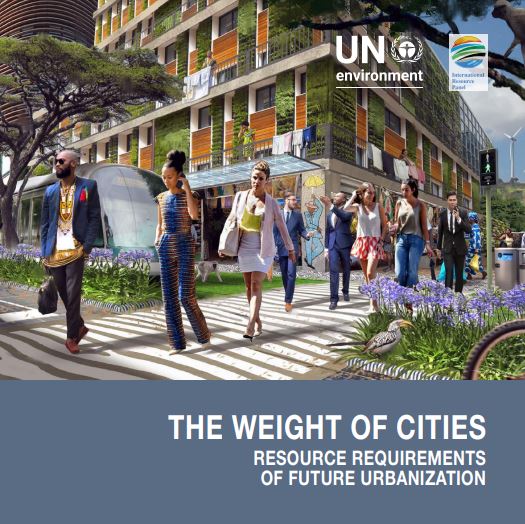The Weight of Cities: Resource Requirements of Future Urbanization (International Resource Panel report with Sustainable Healthy Cities contributing authors)
The Weight of Cities: Resource Requirements of Future Urbanization (International Resource Panel report with Sustainable Healthy Cities contributing authors)
- February 2018
- Report
- Multiple
Over the next 30 years, an additional 2.4 billion people are likely to be added to the global urban population.
This increase in population will result in a significant expansion of existing cities and the construction of new cities. Consequently, material consumption is predicted to grow faster than urban populations.
Quantitative analysis of the global resource requirements of future urbanization shows that in their construction and operation, and to support urban lifestyles, cities use billions of tonnes of raw materials, from fossil fuels, sand, gravel and iron ore, to biotic resources such as wood and food. The high demand for such raw materials far exceeds what the planet can sustainably provide.
Resources should now become a central policy concern, in addition to concerns over CO2, which are now well recognized. ‘The Weight of Cities’ seeks to address the complex interrelationships between cities and the wider ecosystems in which they are embedded, and presents urban resource flows as being key to understanding what it will take to promote a transition from resource-intensive and polluting cities towards alternatives that manage resources more carefully for the benefit of all citizens.
The Weight of Cities is a report of the International Resource Panel and UN Environment. Anu Ramaswami, director of the Sustainable Healthy Cities Network, is a member of the International Resource Panel and was a co-author of the report. Several additional Sustainable Healthy Cities researchers served as contributing authors.
The full report is available for download here. The report’s summary for policy makers is available for download below.





